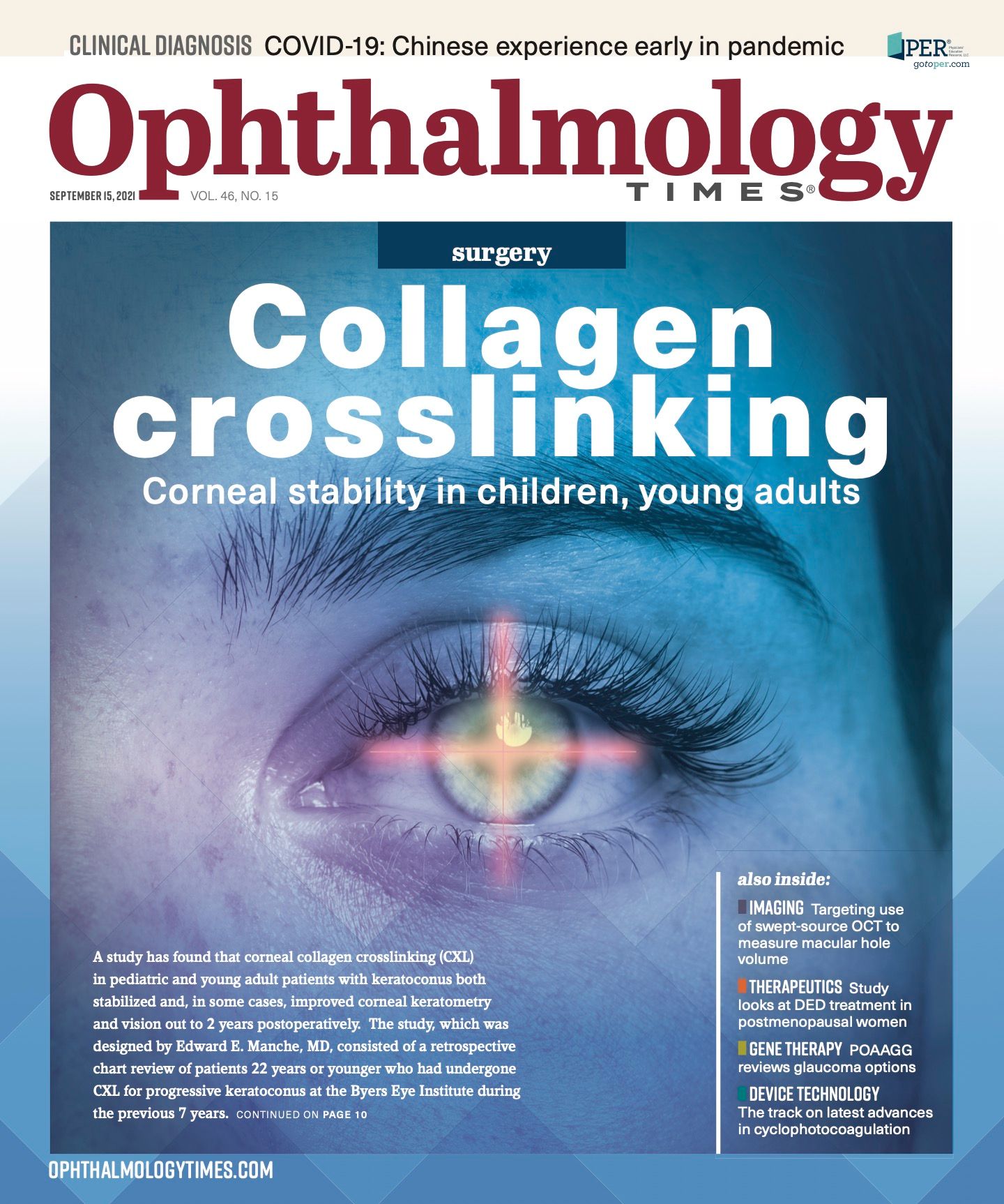Publication
Article
Digital Edition
Study targets use of swept-source OCT to measure macular hole volume
Author(s):
Investigators hoping to develop a novel artificial intelligence model.

Reviewed by Austin Pereira, MD, MEng
The development of a deep learning model to help conduct segmentation of swept-source optical coherence tomography (OCT) images to measure the volume of macular holes was the focus of a presentation in the Lions’ Lair competition, a retina research proposals competition held during the 2021 Canadian Ophthalmological Society Annual Meeting and Exhibition.
“The premise of this is to possibly augment the International Vitreomacular Traction Study [IVTS] group’s classification of macular holes from 2013,” said Austin Pereira, MD, MEng, a second-year ophthalmology resident at the University of Toronto, Department of Ophthalmology and Vision Sciences, in Toronto, Canada. Pereira made a pitch for $35,000 in hopes of funding the development of a novel artificial intelligence (AI) model.
Related: AI: Capturing more information from OCT in wet AMD
“The IVTS upgraded the initial classification macular holes by taking an OCT-dependent and anatomical classification of macular holes,” Pereira said.
Macular hole classification through IVTS is crucial for surgical planning and prognostic considerations for patients, Pereira explained.
“The IVTS group took anatomical classification as the main etiology for macular holes,” Pereira said.
Pereira noted that small macular holes measure less than 250 µm, medium-sized macular holes measure between 251 µm and 400 µm, and large macular holes measure more than 400 µm.
However, vitreomacular traction can occur in areas other than the macula, according to Pereira. Moreover, the retina is 3-dimensional tissue.
“Looking at the retina in a 2-dimensional manner is doing a disservice not only to surgeons but to our patients,” Pereira said.
Indeed, using a measure like minimum linear diameter is 1-dimensional, yet the retina is a 3-dimensional structure, Pereira added.
Related: Early outer retinal findings on en face and cross-sectional OCT
With 3-dimensional viewing, vitreomacular traction was easier to identify, according to Pereira.
The study concluded that high density radial scanning is superior to standard raster volume scanning in detecting small full-thickness macular holes, he noted.
Moreover, research has shown high inter- and intrauser variability within same eye measurements for minimum linear diameter macular holes.
“This changes the prognostic considerations and surgical planning, bringing a patient at times from a small macular hole classification to a large deficit, and vice versa,” Pereira said.
With minimum linear diameter, there is a tremendous amount of OCT segmentation dependence, he added.
“With [minimum linear diameter] being our main biomarker for surgical planning for macular hole surgery, our biomarkers need to be as accurate, precise, and reproducible as possible for our patients,” Pereira explained.
Related: Swept-source OCT imaging assists dry AMD treatment
Pereira, under the supervision of the primary investigator, Netan Choudhry, MD, FRCSC, DABO, employed a deep learning model to obtain automated measurements of macular hole volume, which he described as a robust, 3-dimensional biomarker for macular hole size that can assist in surgical planning and prognostic counseling for patients with full-thickness macular holes.
The pilot study involved 25 patients from the Vitreous Retina Macula Specialists of Toronto (VRMTO) practice, who had full-thickness macular holes, where 3-dimensional OCT images of the holes were obtained preoperatively, 1 month after surgery, and 1 year after surgery.
A single vitreoretinal surgeon, Choudhry, medical director at VRMTO, manually assessed the minimum linear diameter and macular hole volume.
A convolutional neural network was developed to assess volume in an automated fashion.
Related: Seeking a new frontier with intraoperative OCT
Investigators also looked to see if there were correlations between volume and change in vision in comparison with minimum linear diameter, according to Pereira.
“The correlation between automated macular hole volume, as determined by our deep learning model, and the manual macular hole volume, as determined by our vitreoretinal surgery, was 0.94,” he said, adding that the deep learning model needs to be validated before being implemented in daily surgical practice.
“This would give vitreoretinal surgeons another biomarker in their arsenal to help plan surgery and to improve prognostic outcomes for patients,” he said.
Increasing the amount of OCT scans in the training set will help reveal what the macular hole volume truly is, according to Pereira.
Future directions may see AI provide information, such as how much peeling of the internal limiting membrane is needed, and employ data from known past surgeries, Pereira added.
Related: Visualization with en face OCT offers value for ophthalmologists
The variability in minimum linear diameter was the driving force in the project.
“We want to get away from 1-dimensional measures and more robust grading of the size [of the macular hole],” he said. “The volume is the starting point.”
The funding would be used to extract the OCT scans from the participating sites, segment them, and run the AI model, Pereira added.
--
Austin Pereira, MD, MEng
P: 416-928-2132
Pereira is a student in the department of Ophthalmology and Vision Sciences at the University of Toronto. He has no disclosures related to this content.

Newsletter
Don’t miss out—get Ophthalmology Times updates on the latest clinical advancements and expert interviews, straight to your inbox.





